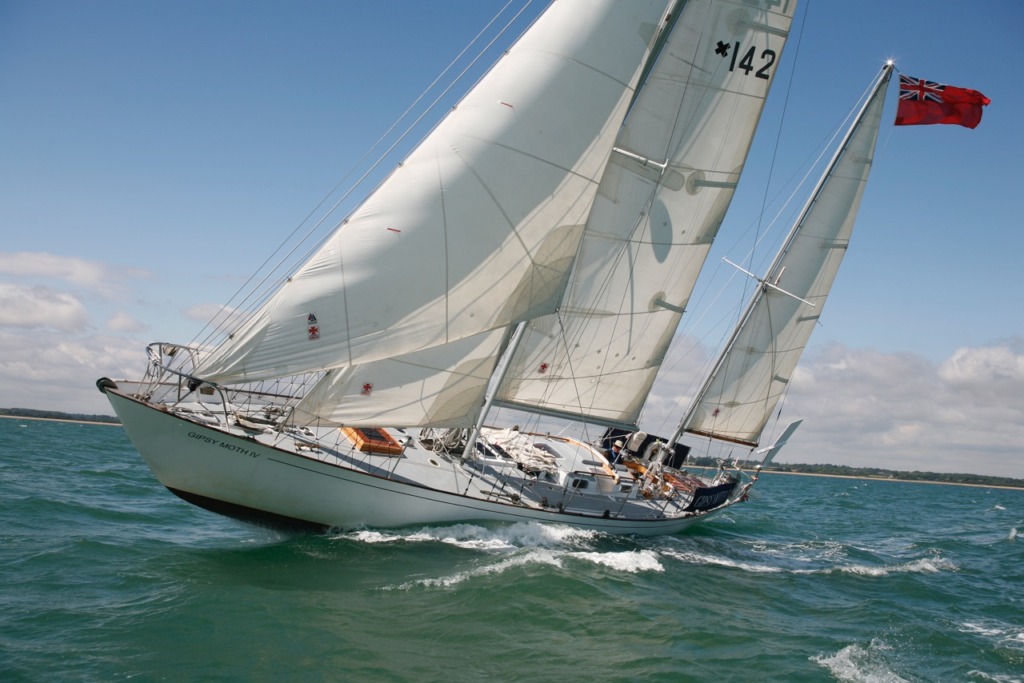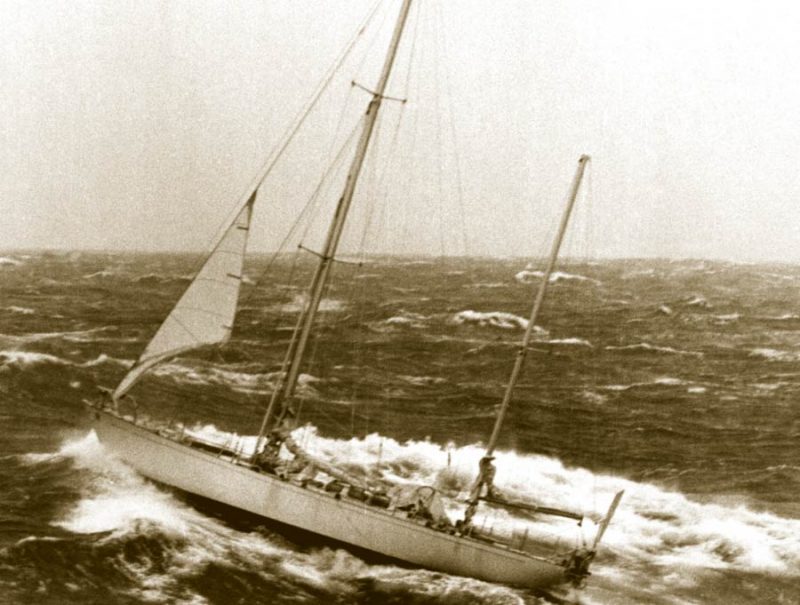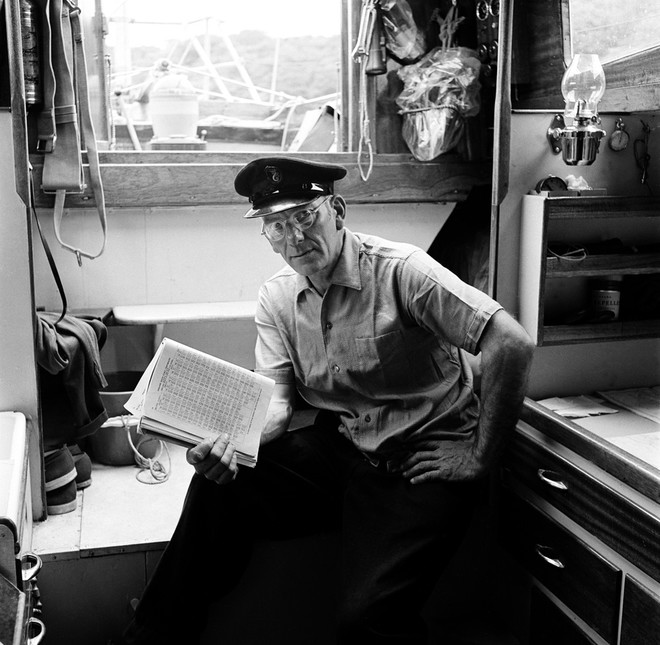The story of Sir Francis Chichester and The Gipsy Moth
With Autumn arriving and our first AW ICONS ORIGINS Collection set to be released, we wanted to kick things off with the story of arguably one of the first globetrotters – Sir Francis Chichester. Before he made his name as a seaman, Chichester was a pioneering aviator. In the 1920s, he developed new navigation techniques, he flew from the UK to New Zealand and made the first flight across the Tasman Sea, modifying his de Havilland Gipsy Moth biplane himself to give it the range required for the crossing. Not bad at just thirty years old.
Gipsy Moth IV was the fourth in a series of boats owned by Chichester and named in honour of his aircraft. It was with this boat that he made his greatest journey, to become the first person to sail solo around the world.
The boat was commissioned in 1965 and built from Honduras mahogany. She was designed to provide the maximum possible sail area with the minimum amount of rigging and the tiller could be operated from the skipper’s bunk to allow for single-handed sailing.
Soon after setting out from Plymouth in August 1967, the boat’s limitations became apparent. Chichester would later remark that she was “Cantankerous and difficult and needs a crew of three.” The Gipsy Moth’s steering system failed while she was still 2,300 miles from Sydney. When Chichester finally made it into Sydney Harbour, modifications were made in an effort to improve the boat’s stability, but to little effect.
The second leg of the voyage would take Chichester across the Pacific before rounding Cape Horn. Around the Cape, things were going to become really challenging. But before even reaching that far, The Gipsy Moth was capsized by what was only a light storm by local standards. The boat was designed to right itself, but the capsizing didn’t bode well for what lay ahead.
Around the cape, the Gipsy Moth faced fifty-foot waves and the cockpit was repeatedly swamped. The wind-speed reading went off the scale and the boat was thrown about helplessly.
However, she survived and Chichester reached home. After 28,000 miles of sailing, he became the first person to single-handedly circumnavigate the globe. Gipsy Moth IV became the fastest vessel of any type to make the voyage alongside a long list of other world records.
Given the difficulties that he experienced aboard the Gipsy Moth, Chichester was indifferent about the boat’s future, pointing out that he only owned one-third of the vessel, adding “It would be better if about a third were sawn off. The boat was too big for me.”
The Gipsy Moth was out on display in a specially built dry dock alongside the Cutty Sark in Greenwich. Appropriate, as the tea clipper Cutty Sark’s own speed records had been among the sources of inspiration for Chichester’s circumnavigation. However, by the early 2000s the boat had fallen into poor condition and she was sold for the price of £1 and a gin and tonic. Her new owners returned Gipsy Moth to the shipyard where she was built for a complete restoration. In 2005, she once-again circumnavigated the globe, this time with a larger crew, combining experienced sailors with a total of 90 disadvantaged young people who joined the crew for different sections of the journey.
The Gipsy Moth then passed into the ownership the Gipsy Moth Trust, who gave her a significant overhaul in 2019-2020. However, during the COVID-19 pandemic, the trust lost all of its sources of funding and it seems that the boat may have to be sold. She awaits a new owner to take her on the next stage of her long adventure.

Whether you’re taking to the high seas or the air, the Pablo Breton stripe Raglan Sweatshirt is the ideal travel partner.

The Dali Espadrille in Sea Blue is the ideal shoe for when you’re on-deck, uncommonly durable, effortlessly comfortable and infinitely re-soleable with our shoe MOT service.

Just like Sir Francis Chichester, a one-piece collar shirt in the softest but durable Zephyr Cotton will go a long way when you’re in need of some home comforts.



